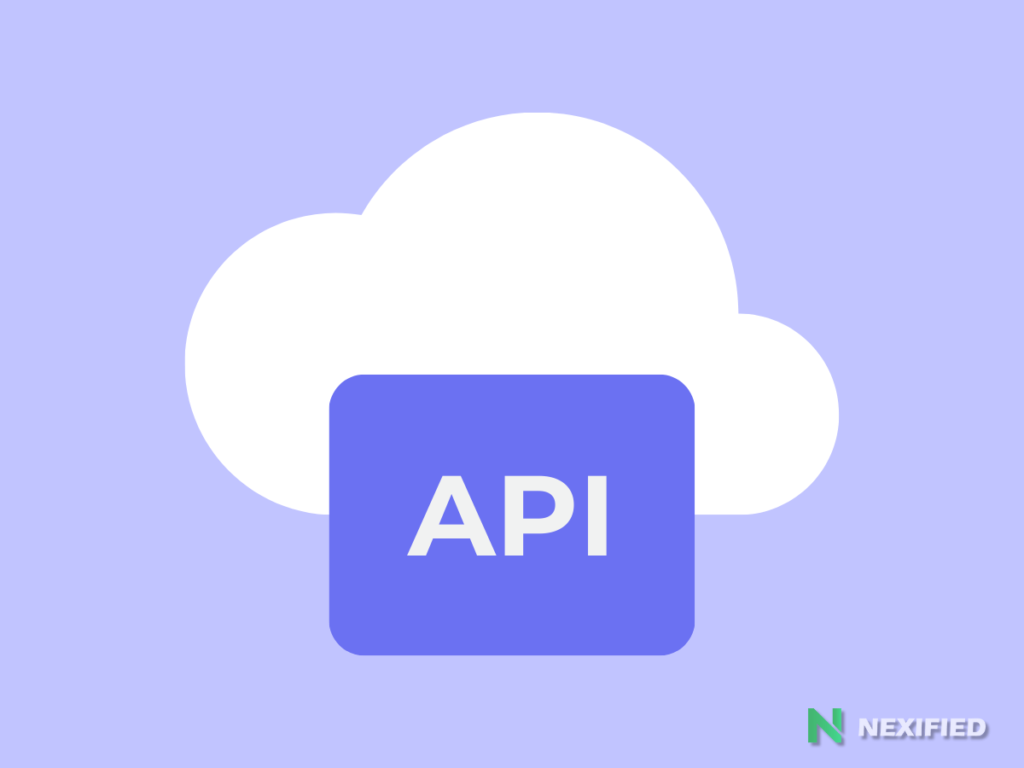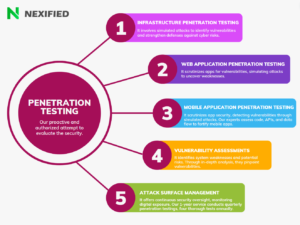
In an era that pivots on seamless data exchange, we cannot overstate the importance of Web API security testing, especially given the growing reliance on APIs for this purpose. APIs, serving as the backbone for communication between applications and services, emerge as critical assets that need steadfast protection. Designers create APIs as contracts, using documentation as an agreement on how these interconnected systems should interact. This underscores the need for API pentesting as a fundamental element in modern cybersecurity strategies.
Understanding Web API Pentesting: the Need for Security
In the digital age, Web APIs have become the linchpin of software communication, enabling seamless interaction between different systems and platforms. However, this interconnectedness also paves the way for potential security risks, making the necessity for solid API security a critical element of contemporary cybersecurity schemes. Understanding the common vulnerabilities in APIs is the first step towards mitigating potential risks:
- Authentication and Authorization: Often, APIs lack proper mechanisms to verify the identity of the requestor and to ensure they have the right to access the requested resources. This can lead to unauthorized access and data breaches.
- Rate Limiting: Insufficient rate limiting can allow attackers to send numerous requests, potentially leading to service disruption or the extraction of sensitive information.
- Insecure Communication: APIs that do not encrypt data transmissions can expose sensitive information to interception by malicious actors.
Furthermore, APIs are integral to the functionality of mobile, SaaS, and web applications, exposing not just application logic but also sensitive data such as Personally Identifiable Information (PII). Secure APIs are critical in safeguarding data and maintaining trust in digital ecosystems, and without them, they would severely hamper the rapid pace of digital innovation. As the attack surface of web-enabled applications shifts increasingly towards exposed APIs, understanding and implementing advanced security measures becomes paramount to prevent data breaches and ensure the confidentiality, reliability, and accessibility of the data transmitted through these crucial channels.
The Importance of Web API Security Testing
Regular penetration testing of Web APIs is crucial for organizations to proactively identify vulnerabilities and mitigate the risk of security breaches. This practice ensures compliance with regulatory standards and maintains the integrity of data and systems. The benefits of API penetration testing are multifaceted:
- Identification of Vulnerabilities: Early detection of security flaws allows for timely remediation.
- Data Protection: Safeguards sensitive information from unauthorized access.
- Compliance: Ensures adherence to industry and legal standards.
- Business Continuity: Prevents disruptions to operations caused by potential security incidents.
- Cost-Effective Mitigation: Reduces the financial impact associated with security breaches.
- Trust and Reliability: Enhances stakeholder confidence in the organization’s commitment to security.
API pentesting delves deep into the security architecture, scrutinizing the APIs that underpin web applications, IoT devices🔗, and mobile apps. It focuses not only on user access, encryption, and authentication but also on the business logic of an API, ensuring that the API behaves as intended beyond the front-end validations. This comprehensive testing:
- Enforces API Correctness: Validates the business logic for robust functionality.
- Fuzz Testing: Generates and tests unusual, unexpected, or random data as inputs to find implementation bugs.
- Improves Team Productivity: Enhances the efficiency of security and development teams by providing clear insights into potential vulnerabilities.
- Strengthens Security Posture: Elevates the overall security measures of the organization, protecting it against emerging threats.
By focusing on these areas, Web API Penetration Testing plays a pivotal role in safeguarding against data breaches, ensuring regulatory compliance, protecting sensitive information, and fostering trust among stakeholders.
Steps Involved in Web API Penetration Testing
We meticulously design the process of Web API penetration testing (API pentesting) to safeguard web applications from potential vulnerabilities and threats. We divide this comprehensive approach into several critical phases:
- Planning Phase:
- Scoping Information Gathering: Collect detailed information regarding the target API’s scope to ensure thorough testing coverage.
- Rules of Engagement Review: Establish clear guidelines and protocols to prevent any unintended disruptions during the pentesting process.
- Execution Phase:
- Reconnaissance: Identify the API’s architecture, including endpoints and methods.
- Threat Modeling: Analyze and predict potential threats to tailor the pentesting strategy effectively.
- Vulnerability Analysis: Employ automated tools and manual techniques to uncover vulnerabilities.
- Exploitation and Post Exploitation: Attempt to exploit discovered vulnerabilities to understand their impact and document findings.
- Post-Execution Phase:
- Reporting: Compile a comprehensive report detailing vulnerabilities, their severity, and recommended mitigations.
- Quality Assurance: Ensure the accuracy and completeness of the pentesting process and findings.
- Presentation: Present the findings to stakeholders, emphasizing key vulnerabilities and suggested security enhancements.
Throughout these phases, methodologies such as API discovery, threat modeling, and prioritizing automated API security tests play pivotal roles. By understanding the API environment and employing best practices, organizations can effectively mitigate identified vulnerabilities, enhancing their security posture against api hacking threats.
Web API Pentesting Methodologies
In the realm of API pentesting, methodologies and tools form the backbone of a successful security strategy. Embracing a variety of standards and advanced strategies ensures a comprehensive approach to securing Web APIs against potential threats and vulnerabilities.
- Methodologies and Standards:
- Penetration Test Execution Standard (PTES), Open Web Application Security Project (OWASP), and Open-Source Security Testing Methodology Manual (OSSTMM) are foundational methodologies guiding the process.
- The Company’s methodology incorporates OWASP Testing Guide, OWASP Top 10 2017, NIST 800-115, PTES, and PCI Penetration Testing Guidance, ensuring adherence to industry-leading practices.
- Emphasis on OWASP Application Security Verification Standard (ASVS) and Testing Guide highlights the importance of standardized testing protocols.
- Tools and Techniques:
- Utilization of tools such as Burp Suite Professional, Recon-ng, Nmap, Sqlmap, Metasploit Framework, Custom Scripts, Curl, Swagger UI, and WSDLer enables a thorough examination of APIs.
- Effective strategies include SOAP/XML Vulnerabilities, Privilege Escalation, CORS Misconfigurations, Endpoint Discovery, and Parameter Tampering, among others, to identify and mitigate risks efficiently.
- Qualifications and Attacks:
- API penetration testers must possess a minimum of 5 years experience in Information Security, hold certifications like OSCP, CISSP, and fulfill specific training requirements.
- Awareness of common attacks like Broken Object Level Authorization (BOLA), Injection Attacks, and Security Misconfiguration is crucial for developing effective remediation strategies.
This multi-faceted approach to API Pentesting, leveraging a blend of methodologies, tools, and skilled expertise, is essential for identifying vulnerabilities and enhancing the security posture of Web APIs.
Mitigating Identified Vulnerabilities
Mitigating identified vulnerabilities in APIs is a multifaceted process that requires a strategic and comprehensive approach. Key strategies include:
- Preventive Measures:
- Implement rate limiting to protect against DoS and brute force attacks.
- Ensure proper input validation and sanitization to thwart SQL injection, XSS, and remote code execution.
- Encrypt traffic using TLS for secure data transmission.
- Utilize security headers like CSP and HSTS for added protection.
- Regularly update and patch components to safeguard against known vulnerabilities.
- Detection and Response:
- Employ API vulnerability scanning tools for automatic detection of security weaknesses.
- Implement a robust logging and monitoring system to quickly identify and respond to security incidents.
- Maintain an inventory of APIs and manage access control rigorously.
- Authentication and Authorization:
- Strong authentication and authorization protocols are critical.
- Apply the principle of least privilege to minimize access rights.
- Implement and validate access tokens to ensure that only authorized users can access your API.
By adhering to these strategies, organizations can significantly enhance the security posture of their Web APIs, effectively mitigating potential vulnerabilities and ensuring the protection of sensitive data against API hacking threats.
Conclusion
Through the comprehensive exploration of Web API security, it’s clear that the integrity and resilience of APIs are fundamental to safeguarding digital ecosystems against sophisticated threats. From understanding the criticality of secure APIs in maintaining seamless communication between services to recognizing the indispensable role of penetration testing in identifying and mitigating potential vulnerabilities, the article has meticulously outlined the paths toward enhancing cybersecurity measures. Emphasizing on methodologies, tools, and the importance of ongoing vigilance offers a strategic framework to address the evolving landscape of cyber threats effectively.
Moreover, the proactive steps towards mitigating identified vulnerabilities underscore the need for a holistic approach that encompasses preventive measures, robust detection mechanisms, and stringent authentication protocols. As digital inter-connectivity expands, the emphasis on securing Web APIs must evolve accordingly to protect sensitive data and ensure trust in technology platforms. For organizations looking to fortify their API security, contact us for Pentesting services designed to elevate your cybersecurity posture. Guided by expert insights and comprehensive strategies, we can navigate the complexities of Web API security together, ensuring a safer digital future.
FAQs
What does API Pentesting entail?
In API Pentesting, or penetration testing, we evaluate the security of APIs once the software system is deployed. The process targets the identification and resolution of security vulnerabilities that the earlier phases of software development might not have detected.
What are the fundamental aspects of API security?
The core elements of API security include authentication, authorization, encryption, and monitoring. These components are critical in safeguarding APIs from unauthorized access and mitigating the risks of various attacks, such as SQL injections.
How does one conduct API security testing?
To conduct API security testing, follow these steps:
- Define the API endpoints.
- Identify the most sensitive endpoints and potential vulnerabilities.
- Map out all the API endpoints.
- Evaluate the effectiveness of authentication measures.
- Examine the authorization controls in place.
- Test for any improper access controls.
- Analyze the techniques used for input validation.
- Ensure the integrity of the data being handled.
What tools are recommended for testing the security of Web APIs?
Some top recommendations for API security testing tools include:
- APIsec
- Burp Suite
- Acunetix
- beSECURE
- Zap
These tools can help identify security weaknesses and ensure that your Web APIs are well-protected against potential threats.

